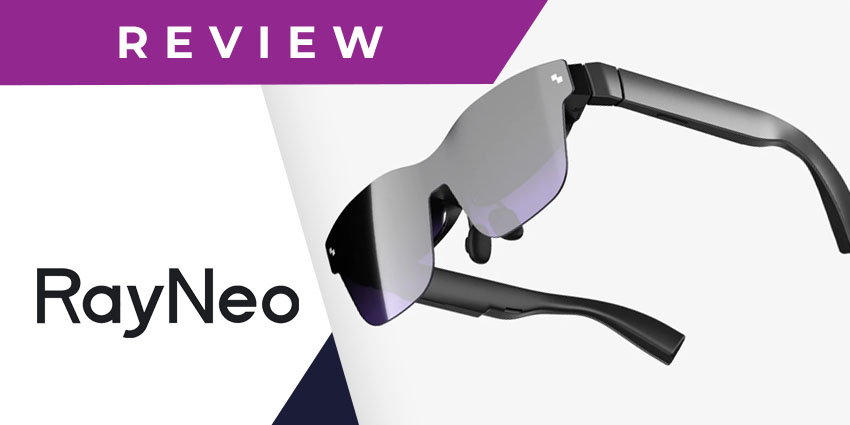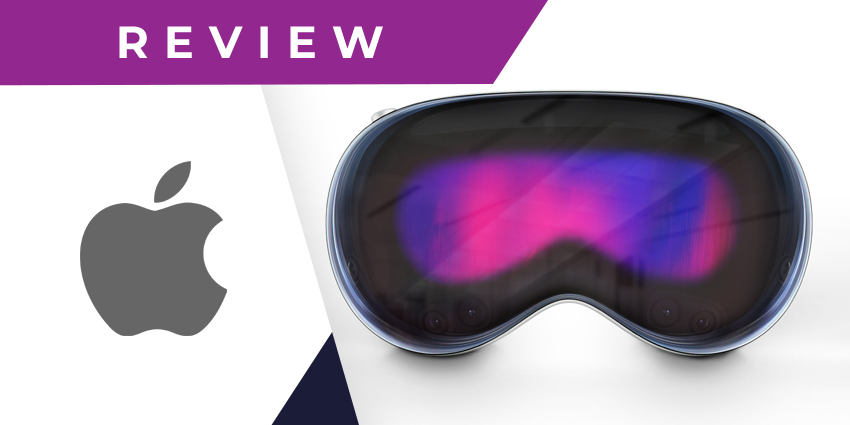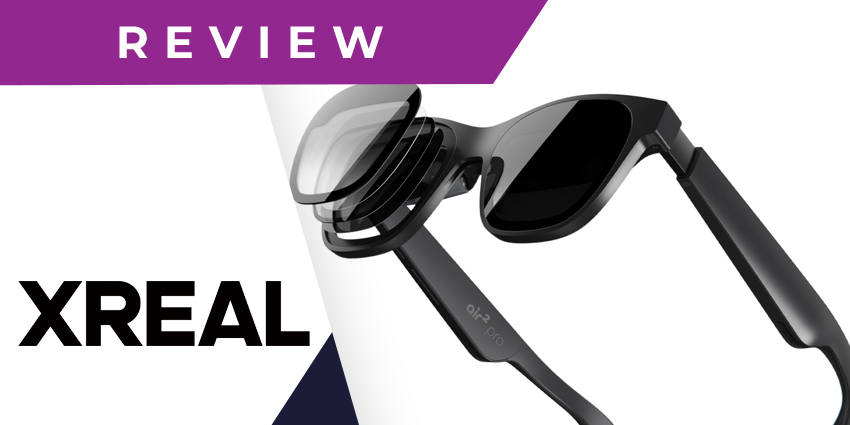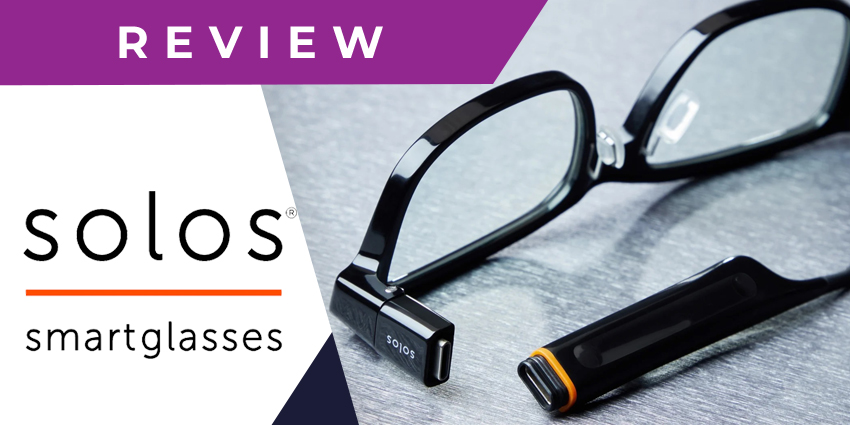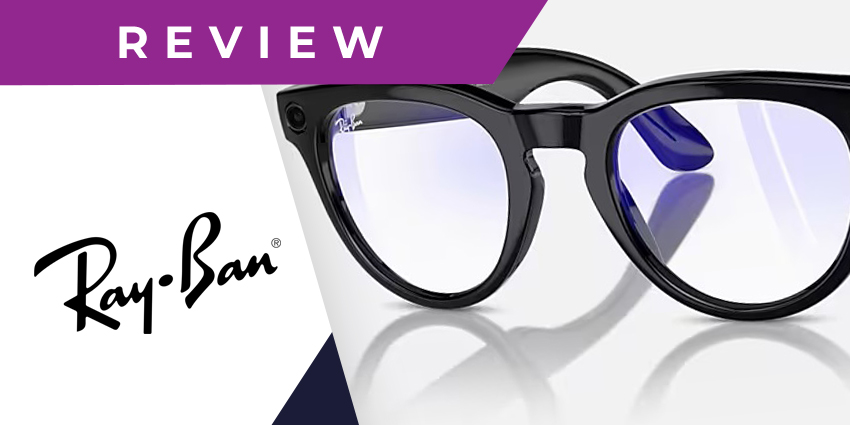If you’re looking for a sleek, sophisticated, and affordable set of smart glasses, the RayNeo Air 2 AR glasses could be the perfect choice. Introduced in November 2023, The RayNeo Air 2 specs have become some of the best-selling smart glasses in the world.
Just 6 hours after they were released on Amazon, they claimed the number one “bestseller” spot for the global marketplace’s Smart Glasses category.
So, what exactly can these innovative smart glasses do? Are they as revolutionary as RayNeo says, or will they quickly fade into the background as companies like Meta, Microsoft, and Apple continue to invest in the XR landscape?
Let’s find out.
RayNeo Air 2 Review: The Specs
The RayNeo Air 2 smart glasses, created by an innovator in the consumer-grade AR landscape, are a pair of ultra-lightweight XR glasses. They combine micro OLED panels for ultra-vivid visuals with a 76-gram body for comfortable all-day wear.
Interestingly, despite their name, the RayNeo Air 2 glasses aren’t an enhanced version of an existing solution from RayNeo. There are no “RayNeo Air” predecessors. However, RayNeo does offer the TCL Nxtwear S+, Nxtwear S, and RayNeo X2 glasses.
The RayNeo Air 2 glasses give users a “big screen experience” they can carry in their pocket to access digital content wherever they are. Like most smart glasses, they project a floating virtual display into your vision, integrating with a range of smartphones, tablets, and consoles.
The RayNeo Air 2 glasses aren’t standalone like the Apple Vision Pro or Meta Quest 3. They require a USB-C connection to any device you want to use, such as your iPhone or MacBook.
Here’s a quick look at the specs:
- 201-inch configurable virtual screen
- Sony Micro OLED displays
- 120 Hz refresh rate
- 46-degree field of view
- Dynamic stereo sound
- Discreet whisper mode
- TUV Rheinland comfort-certified structure
- 600 Nits of brightness
- 76g weight
Pricing and Availability: An Affordable Option for Beginners
The RayNeo Air 2 smart glasses are available to consumers through the Asia Pacific Region, the Middle East, Europe, and North America. In the US, you can find them listed on Amazon and available through supermarkets like Walmart. In the UK, RayNeo only partners with the “SmarTech” company for distribution.
One of the things that makes these smart glasses so appealing in an increasingly crowded XR market is their pricing. Though the glasses aren’t as advanced as complete VR/AR solutions like the Apple Vision Pro, they also don’t cost nearly as much. A set will cost around $379, although you may need to purchase an additional $99 TCL portable adapter for integration with devices that don’t support a USB-C alt-mode display.
RayNeo also offers “bundles,” which include an OLED adapter and a “JoyDock” option for charging your glasses alongside the Nintendo Switch.
RayNeo Air 2 Design and Comfort
Compared to a standard VR or mixed reality headset, the RayNeo Air 2 glasses are some of the most comfortable wearables on the market. They look and feel like futuristic sunglasses, though the hinges and arms are a little chunkier.
Like most smart glasses, the RayNeo Air 2 is intended for longer use. They’re lightweight and adjustable, so you can ensure they fit your face perfectly. Plus, the two micro-OLED screens offer excellent visual comfort, each with 600 nits of brightness and a 1080p resolution.
Each arm comes with a built-in speaker to direct sound to your ears. However, you might need a pair of wireless earbuds for better volume control. The nosepiece is malleable and can slide through three different positions to help you find the perfect level of focus.
Additionally, if you’re wearing prescription lenses, you can get a tiny pair from RayNeo that clip into the inside of your headset magnetically.
One of the best things about the RayNeo Air 2 glasses is how easily you can customize your experience. Holding the rocker on the right arm allows you to switch between different refresh rates (60hz and 120hz). Holding down the volume rocker enables “whisper mode,” which uses acoustic phase cancellation to ensure privacy.
The biggest downside is that you’ll be stuck with a USB cable running behind your ear. Fortunately, the USB port is angled to help keep it out of the way, but this could be an issue if you’re looking for a totally “wireless” experience.
Battery Power and Ease of Use
As mentioned above, the RayNeo Air 2 glasses aren’t a standalone device. Unlike VR/AR headsets, which generally feature built-in processors, most smart glasses need to connect to an external system. This helps to minimize the weight of your headset, but there are some downsides.
Since your glasses draw power from whatever portable device you’re using, such as your tablet or smartphone, you may run out of battery quickly.
Fortunately, we found the glasses very easy to set up. You just plug in your device, and your screen will be mirrored on the glasses’ virtual screen. They automatically work with various smartphones and PCs supporting DisplayPort over USB-C.
Notably, while these glasses are intended chiefly for consumers and entertainment purposes, they can also connect with devices in the business world; you can link them to your Windows laptops, MacBooks, and Chromebooks to expand any screen you use for work.
The whisper mode makes these glasses particularly useful for professionals, in our opinion, because they ensure you can keep the content you’re viewing as private as possible.
There is an XR app you can use to adjust specific settings, but it’s not particularly advanced. You can’t make any granular changes to your experience. However, you can choose from different languages for your screen and your preferred audio device. On the plus side, you can set up “AR subtitles” for whatever you’re viewing if you don’t rely entirely on audio.
RayNeo Air 2 Glasses: Performance
RayNeo has undoubtedly taken steps to elevate the performance of its smart glasses above the competition. They feature next-gen Sony Micro OLED displays that can effectively create a “virtual screen” up to 201 inches wide, with a 1080p resolution. Plus, you get a fantastic refresh rate of up to 120Hz and 600 nits of brightness (compared to 400 on the Nxtwear S glasses).
The enhanced refresh rate and the sharp display offer a smooth augmented reality experience. However, similar to most smart glasses, you’ll get a better experience if you’re looking at content against a plan or dark backdrop.
We also noticed a little burring around the edges of the screen. While the central image is excellent, if your vision strays, it may feel like you’re sitting too close to a television. There’s still the potential issue of latency causing a little “virtual reality sickness,” too.
The stereo sound is also good, but also pretty quiet. The more you crank up the volume, the more distortion you’ll likely hear, so we recommend using a pair of earbuds instead. Additionally, it’s worth noting that these glasses offer a relatively limited “AR experience.”
You’re getting the opportunity to display your screen in front of your vision, but you can’t actively interact with any AR content without using your accompanying device.
RayNeo Air 2 Review: The Verdict
Ultimately, the RayNeo Air 2 glasses are a fantastic and affordable way to explore the benefits of AR smart glasses, particularly for beginners. They offer some significant improvements over previous iterations of AR glasses, with bright, beautiful, and rich displays. Plus, they have a fantastic refresh rate to help reduce latency.
However, there is room for improvement. For instance, more customization options through the RayNeo app might make these glasses more appealing to a broader range of users.
Pros
- Excellent refresh rate and visual clarity
- Comfortable, lightweight design
- Affordable pricing for beginners
- Fantastic whisper mode for privacy
- Compatible with a variety of devices
Cons
- Quiet sound
- Not standalone (requires a USB connection)
- Consumes a lot of battery life
